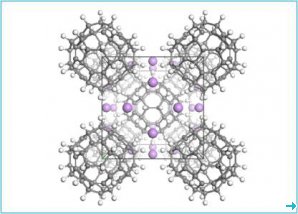Energy
Energy storage, transport, production - neutrons are multi-faceted tools contributing to different areas of energy research
With the growth of the world population, basic needs such as food, clean water and health care are becoming more and more difficult to meet. Although technological solutions exist for many problems, all of them rely on a continuous supply of energy in the form of electrical power or heat. In view of limited resources of fossil fuel, other high-grade forms of energy, such as electricity will gain more and more importance. However, the production, distribution and storage of electrical power need substantial improvements in order to meet the world´s future needs.
Neutrons and muons probe the atomic structure and are therefore well suited to investigate materials for energy research. Furthermore, neutron can penetrate massive material easily, which allows to study complex components in-situ under technical conditions.
One of the major challenges in energy management is to increase dramatically our capacity to store energy for subsequent use as electric power. Nickel-metal hydride (Ni-MH) and lithium ion materials are replacing less efficient heavy-metal batteries based on toxic cadmium and lead. The properties of these new energy storage materials depend on light-weight atoms such as hydrogen and lithium. These are difficult to see with X-rays, but they scatter neutrons strongly.
Examples in the field of energy storage research comprise the use of neutron diffraction to study the phase analysis of anode and cathode materials during charging and discharging of batteries and radiographic imaging of the filling level of batteries. Quasi-elastic neutron scattering can help explain the dynamics of the lithium ions inside such batteries and the thin films and their interfaces inside the batteries are also being investigated with neutron reflectometry.
Hydrogen storage is another important topic to overcome the limitations of energy storage in general. Due to the high sensitivity of neutrons to hydrogen atoms, their transport properties in solid storage materials can be analysed in detail. The filling of hydrogen in real devices under usage conditions reveals the technical details of the charging/discharging process. Suitable storage materials are being been analysed in detail using neutron diffraction, especially for light weight materials as possible hydrogen storing materials for mobile applications.
See this scientific highlight about the use of neutrons to study Magnesium-Titanium (Mg-Ti) alloys for hydrogen storage.
In the field of energy transport, the development of high temperature superconductors benefits from the basic understanding of material properties achieved by neutron scattering.
In photovoltaics and solar energy research, reflectometry is used to study the performance of solar cells.
Further reading
- J. C. Pérez-Flores, C. Baehtz, M. Hoelzel, A. Kuhn and F. García-Alvarado, Investigating a new material for lithium rechargeable batteries
- Crespo, I., From Bragg’s law to neutron diffraction, NMI3 article
- S. Eijt, Vacant crystal sites provide valuable clues on the fast hydrogen transport in Mg-Ti-H films

